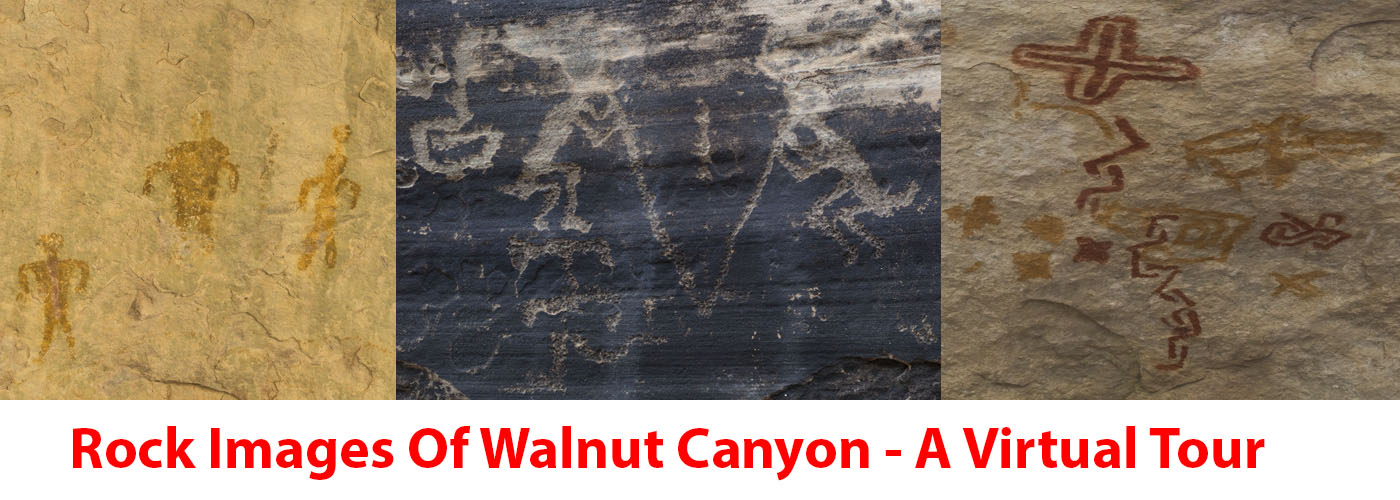Rock images are unique abstract and symbolic expressions of a certain geography and worldview. Petroglyphs and pictographs excite our imagination and sense of appeal for many reasons, primarily because they are understood by most people as universal human expression. For archeologists, rock images provide information on human adaptation and complement other classes of material remains from the past.
Peter Pilles, chief archaeologist, Coconino National Forest
Broadly speaking, there are three different types of rock images:
Pictographs are designs painted on the rock face with a paint mixture. The paints are mineral or organic pigments mixed with liquids/binders like fat, blood, and water. Elements can be drawn directly with the human hand, by using brushes made from plants like the yucca and agave, or by using a blowtube. Color choices vary for pictographs, and the elements can be monochrome (single color), bichrome (two colors), or polychrome (several colors). Because they sit on the surface of the rock, they are prone to erosion unless protected from the elements by an overhang or alcove. The geology of Walnut Canyon has resulted in many such alcoves in the Kaibab Formation, and that is where many of the pictograph sites can be found. Pictographs are present at WACA 144, 161, 180, 268, 500 and 503.
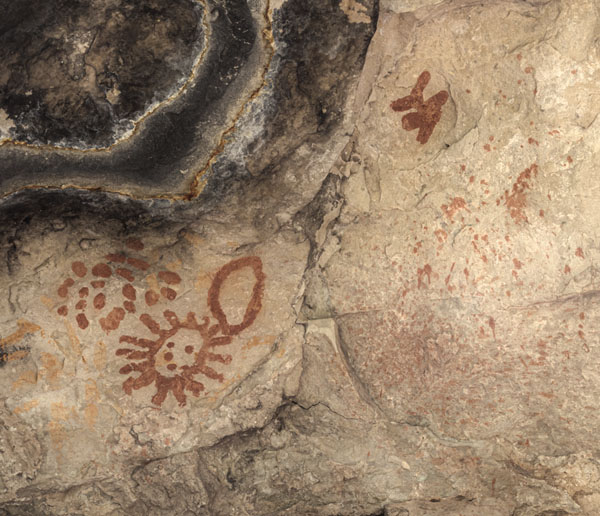
Red pictographs, site WACA 180 (Photo: Northern Arizona University)
Petroglyphs are designs made by physically modifying rock surfaces. Petroglyphs are usually created on softer rocks, like the Coconino Sandstone found in the lower reaches of the canyon. The Kaibab Formation is extremely hard, and it is difficult to create petroglyphs on surfaces of that material. Petroglyphs are found at WACA 209, 223, 462, 476 and 497.
There are four commonly-used methods for creating petroglyphs:
- Direct percussion – hitting the rock surface directly with a stone tool. This results in rougher outlines for the design.
- Indirect percussion – using two stone tools, one as a hammer and the other as a “chisel”. This allows for cleaner lines, and finer control over the designs. The Sinagua commonly employed this method.
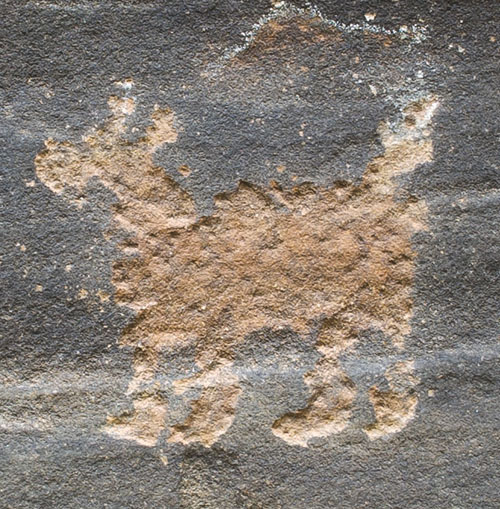
Petroglyph, indirect percussion, site WACA 462. Note the dark desert varnish surface, with the light sandstone exposed by the pecking. (Photo: Northern Arizona University)
- Incising/inscribing – creating designs by rubbing a stone tool directly on a rock face. This can range from simple scratches to deeply-incised designs. There are fine examples of this type at WACA 462.
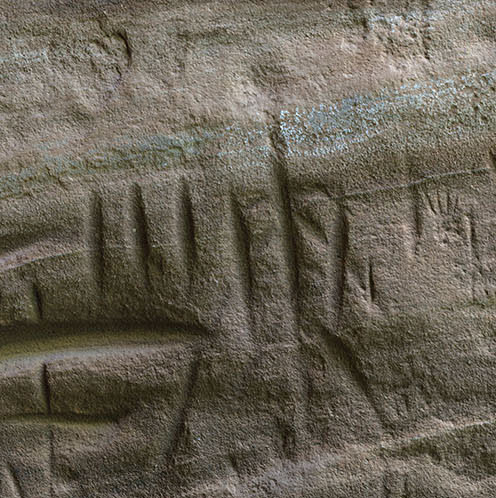
Incised petroglyphs, Verde Incised style, site WACA 462 (Photo: Northern Arizona University)
- Abrasion – created by rubbing the surface with a harder material to expose the rock below.
In the dry climates found throughout the Western United States, a dark film called “desert varnish” can form on rock surfaces. Any of the four techniques above can remove this varnish, often revealing a lighter surface underneath that highlights the created design. Petroglyphs pecked into desert-varnished surfaces are present at several sites in Walnut Canyon.
Geoglyphs/Intaglios are designs created by deliberate modification of the ground surface. Geoglyphs are arrangements of rocks into designs, while intaglios are designs created by removing the top layer of the surface to reveal lighter colors underneath. There are many examples of this in Arizona, particularly along the lower reaches of the Colorado and Gila Rivers, but there are no known examples of this type at Walnut Canyon.
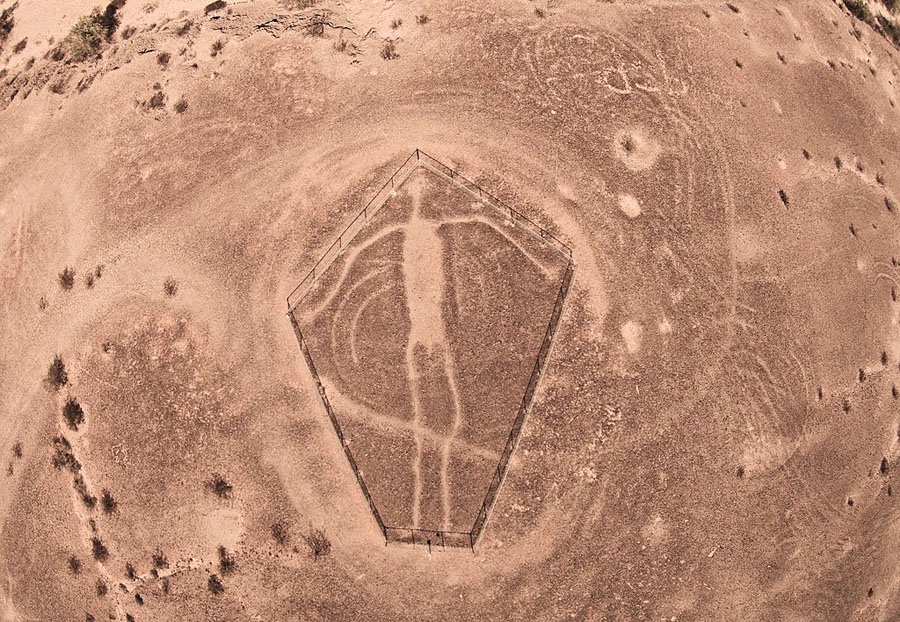
Blythe Intaglios, north of Blythe, CA (Photo: Rsfinlayson [CC BY-SA 4.0 (https://creativecommons.org/licenses/by-sa/4.0)])
When describing rock images, an element denotes a single design, while a panel describes a set of elements on a rock face. Archaeologists usually describe the design elements as either representational or non-representational. Representational elements show what archaeologists think of as known entities.

